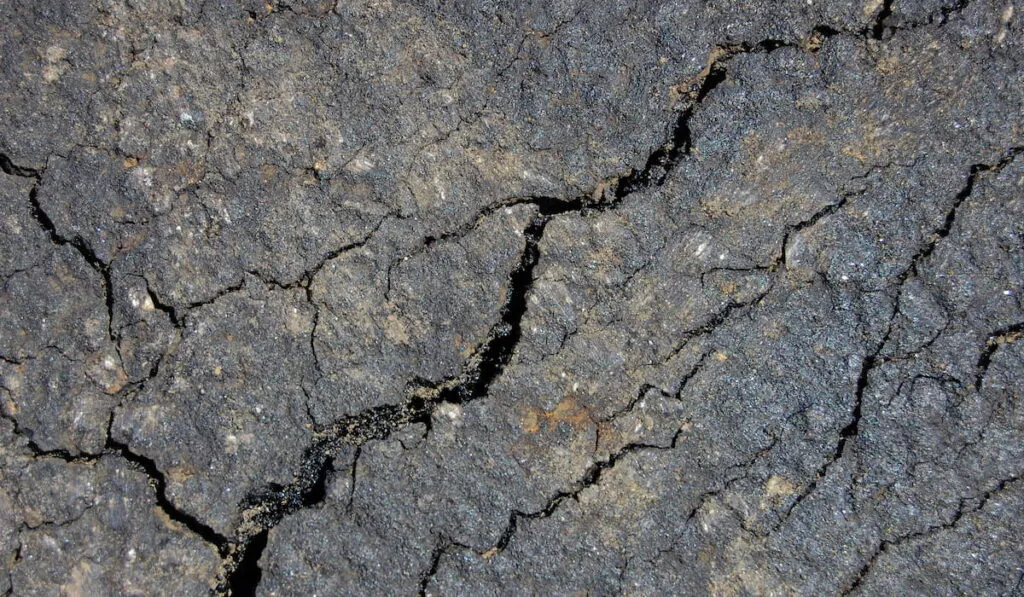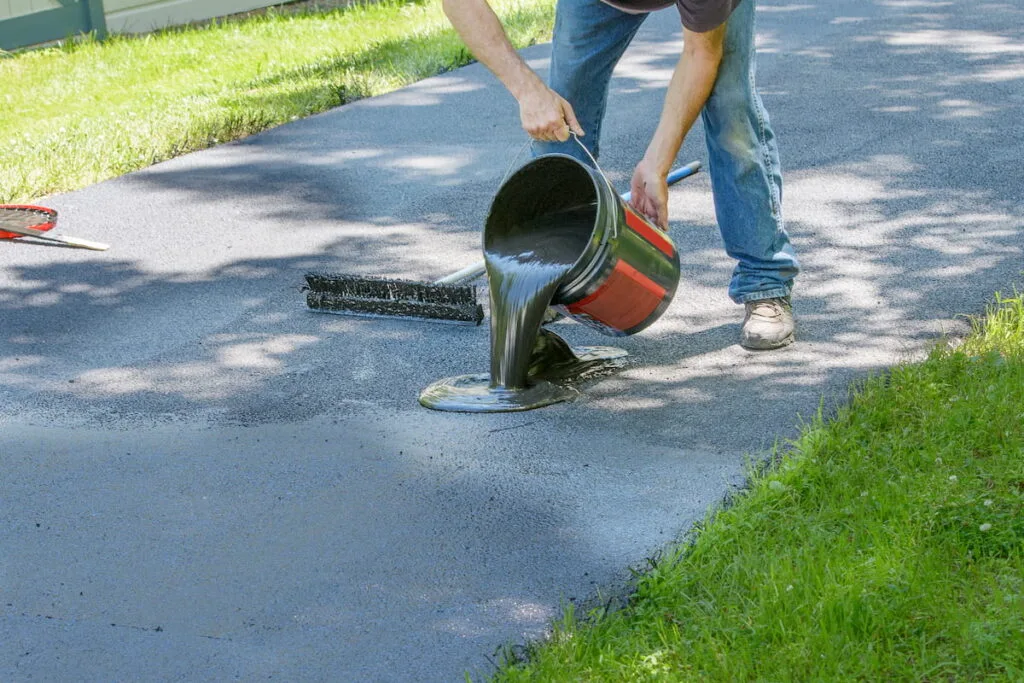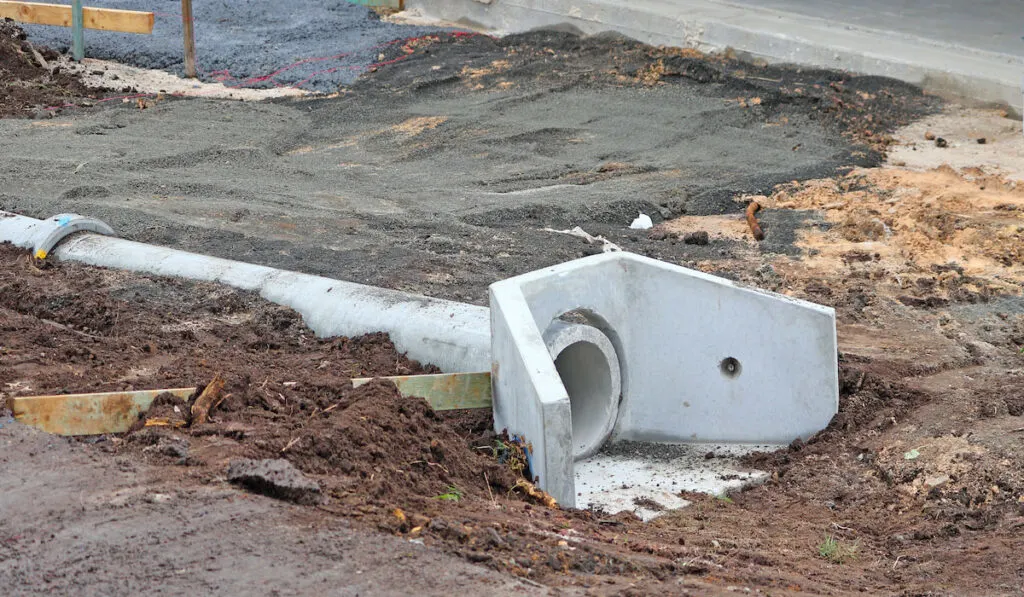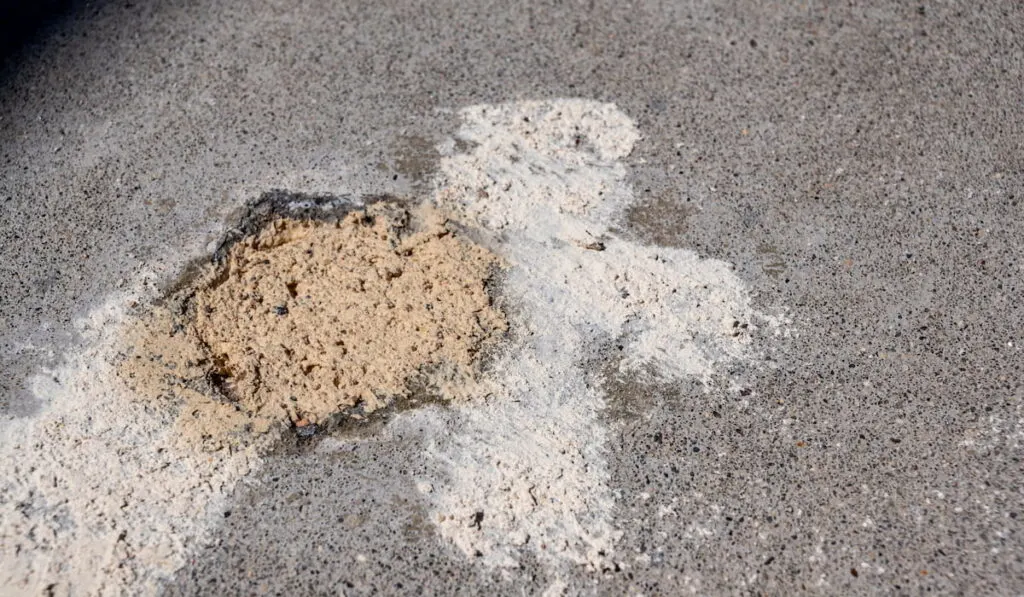*This post may have affiliate links, which means I may receive commissions if you choose to purchase through links I provide (at no extra cost to you). As an Amazon Associate, I earn from qualifying purchases. Please read my disclaimer for additional details.
If you’re experiencing a sudden upheaval in your supposedly solid driveway, you’re not alone. Heaving can occur in both asphalt and concrete driveways for different reasons but there are ways to fix and prevent heaving from happening.
The most common reasons for driveway upheaval are due to the freezing and expansion of excess moisture within cracks of the asphalt or inadequate soil composition beneath the concrete.
Both of these problems can be fixed and prevented.

Keep reading to find out a more detailed explanation of the causes of driveway upheaval, how to fix it, and how to prevent it for both asphalt and concrete driveways.
Table of Contents
What Can Cause My Asphalt Driveway to Heave?
Asphalt driveways are vulnerable to heaving due to the freezing and expansion of moisture trapped in and under the asphalt especially in areas that experience below freezing temperatures. It’s not just the freezing that’s the problem, though.
The cycle of freezing, expansion, and then thawing can cause cracks and sometimes severe dips and hills in your driveway.
With these weak spots in your driveway, the rest of the driveway is now more vulnerable to cracking and breaking as well. These heaves can be extremely dangerous and cause damage to your vehicles or injury by becoming tripping hazards.
If your driveway is experiencing frost heaves, it is best to take care of the problem as soon as possible.

How Do I Fix My Heaved Asphalt Driveway?
You don’t have to completely rip up and repave your asphalt driveway in order to fix frost heaves. Instead, you can hire a professional asphalt expert to repair the cracks in your driveway.
The best time to fix asphalt driveways that are suffering from frost heave damage is after the temperature stops fluctuating.
Even if the days remain above freezing, if the nights are still dropping below thirty-two degrees Fahrenheit, the cycle of thawing and refreezing of frost heaves is still active.
Wait a good two weeks after the last freezing temperatures or ask your asphalt expert when they recommend patchwork should be done.
How Do I Prevent My Asphalt Driveway from Heaving?
It can be difficult to prevent frost heaves, especially in areas that receive months of freezing temperatures and a lot of winter and spring precipitation, but it is not impossible.
Check for Drainage Issues

One of the first things to look for is potential drainage issues. The next time it rains, especially if the rain is heavy, go out and observe if there are spots where the water seems to pool or run under the asphalt.
These are weak areas that allow moisture to build up underneath the asphalt and then become prime faulty spots for heaving.
To prevent this from happening, find a way to redirect the drainage of runoff water away from the driveway.
Additionally, fill in the spots where the rain is seeping under the driveway or build up a berm to stop water from getting under the driveway.
Install a Heating System
Another way to prevent driveway heaving is to install a heating system that will insulate the driveway and not allow ice from freezing and expanding in the asphalt.
These systems need to be installed before pouring the asphalt for the driveway so it should be considered if you need to completely repave or if you’re laying a driveway for the first time.
What Can Cause My Concrete Driveway to Heave?
Concrete is not as susceptible to frost heaves as asphalt, but it still has its own issues with heaving. If a concrete driveway is poured on top of a soil composition that is not stable enough to sustain the driveway, then heaving may occur.
For example, soil that has a large clay composition can retain a lot of moisture and cause the soil to swell and expand.
Once the soil dries out, it will shrink. This change in the ground on top of which you lay your concrete can have lasting negative effects on your driveway.
The change will cause the concrete to heave and buckle according to the saturation of the soil underneath and could result in minor surficial cracks or major damage.

How Do I Fix My Heaved Concrete Driveway?
If the damage to your driveway due to heaving is minimal you may be able to resurface your concrete driveway for a fraction of what it would cost you to remove and repour the concrete for a brand new driveway.
- Chip away any loose debris around the cracks much as you would do when sanding down the edges of chipped paint before patching up the spots.
- Use a pressure washer to rinse the driveway and clean off any dirt or debris.
- Fill in the cracks with a wet concrete mixture.
- Make sure the smooth out the surface of the filled in cracks.
- Let the concrete dry and then top it off with a resurfacer to help the patched up cracks blend in with the rest of the driveway and give it texture to prevent slippery spots.
If the damage is too extensive such as large blocks of concrete lifted out of place at least a half an inch above the driveway or many cracks wider than a quarter of an inch, you may have to completely rip out the old driveway and repour a new one.
Check out some prevention methods below before re-pouring your concrete to make sure this doesn’t happen again.

How Do I Prevent My Concrete Driveway from Heaving?
There’s not much you can do to prevent heaving from occurring once your concrete driveway has been poured; however, there are preventative measures that can be taken before the driveway is poured to prevent heaving from occurring at all.
Since poor soil composition is the most common cause of concrete driveway heaving, testing your soil before you lay the driveway will save you a lot of headaches.
You can call a professional concrete pouring company to check your soil composition. If it is less than adequate for pouring a driveway, they may be able to help you by adding materials needed to bolster the structural integrity of the ground.
Even though frost heaving is not as common for concrete driveways, it can still happen. By laying specialized driveway insulation down before pouring the concrete, you can help prevent the cycle of freezing and expansion before it even starts.
Conclusion
If your driveway is suffering from heaving, whether it’s made of asphalt or concrete, be assured that there are ways to fix it and prevent it from happening again. Heaving usually occurs in asphalt driveways due to the cycle of freezing, expansion, and subsequent thawing of excess moisture under and throughout the asphalt.
Alternatively, the culprit behind concrete driveway upheaval is usually inadequate soil composition that expands and shrinks drastically with the change in moisture content.
Both types of heaved driveways can be patched if the cracks are not substantial. However, a complete reconstruction of the driveway may be in order if the damage is significant.
The best preventative measures for driveway upheaval occur before the driveway is ever laid. Putting in insulation or heating systems can help prevent frost heaves, while bolstering the soil composition can help prevent bucking due to water retention issues.
Resources
- https://www.liftupconcrete.net/heaving-vs-settling-concrete-whats-the-difference/
- https://copavementsolutions.com/does-your-drainage-cause-asphalt-driveway-heave/
- https://goodmansonconstruction.com/preventing-frost-heaving/
- https://todayshomeowner.com/video/how-to-caulk-and-seal-cracks-in-concrete-driveways/
- https://premierpavingmd.com/frost-heave-drainage-damage-how-to-repair-your-asphalt/
